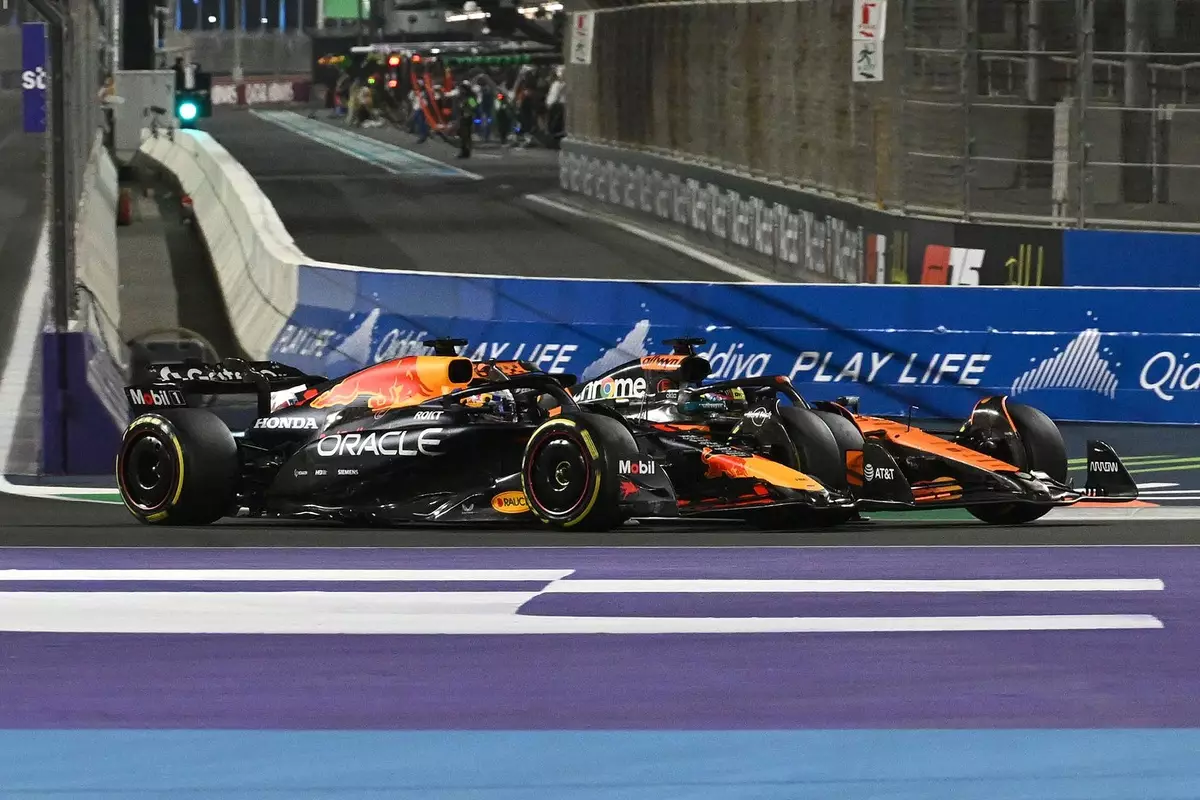Decisive Showdown: Max Verstappen’s Penalty Sparks Controversy in Formula 1
Welcome to the high-octane world of Formula 1, where every split second can redefine a race and every decision is scrutinized under a global microscope. Recently, the Saudi Arabian Grand Prix became a pivotal moment in the sport when Max Verstappen’s five-second penalty sent shockwaves through the Red Bull Racing team and beyond. As an avid follower of F1, I found myself glued to my seat as the drama unfolded, eager to dissect this incident that has fans buzzing and experts debating.
For me, Formula 1 is not just a sport; it’s a thrilling saga of strategy, speed, and skill. The controversy surrounding Verstappen’s penalty is a testament to the passion that fuels this sport and its community. Whether you’re a long-time fan or new to the racing scene, there’s something incredibly captivating about the tension between rules and racing excellence. So grab your favorite beverage and join me as we dive into this electrifying event that has everyone talking.
Key Takeaways
- Max Verstappen’s penalty during the Saudi Arabian Grand Prix has sparked widespread debate.
- The incident highlights ongoing discussions about race standards and rule enforcement.
- Red Bull Racing’s response reflects strategic decisions in navigating F1 regulations.
- This controversy invites further examination of how penalties impact the sport’s dynamics.
Understanding the Incident
At the heart of this controversy lies a question of fairness and competitive integrity. During an intense duel with McLaren’s Oscar Piastri, Verstappen was penalized for allegedly gaining an advantage by leaving the track. The stewards were adamant that his actions violated Driver’s Standards Guidelines, citing his increased lead as evidence. This ruling put Red Bull Racing in a difficult position, with team principal Christian Horner passionately defending Verstappen by presenting onboard footage to contest the decision.
Horner described the stewards’ ruling as definitive but acknowledged the difficulty in overturning such decisions. Faced with a choice between pursuing a costly appeal or accepting the penalty, Red Bull opted for pragmatism. This decision underscores their understanding of Formula 1’s complex regulatory environment and highlights the challenges teams face when navigating these intricate dynamics. It also raises questions about how teams balance competitive drive with adherence to evolving rules.
Revisiting the Rules of Engagement
The landscape of Formula 1 is constantly shifting, with rules adapting to meet new challenges and technologies. This evolution requires teams to stay vigilant, ensuring they push boundaries without crossing into violations. The discussion around Verstappen’s penalty is part of a broader conversation about how teams manage penalties within this framework. Teams like Red Bull often find themselves at a crossroads: should they accept penalties as part of racing or challenge them in hopes of setting new precedents?
This isn’t an isolated incident; it echoes past controversies such as McLaren’s appeal after Lando Norris received a penalty at the United States Grand Prix. These situations highlight inconsistencies in how rules are applied, leading to frustration among teams when similar actions yield different outcomes. Such challenges emphasize the need for clearer guidelines and consistent enforcement to maintain fair competition in high-stakes environments like Formula 1.
The Bigger Picture in Formula 1
The ramifications of this incident extend beyond just one race or one driver. It touches on larger themes within Formula 1, including fairness, safety, and innovation. Regulations are designed to ensure races are conducted safely and fairly, but they also create tension as teams and drivers test these boundaries. The fallout from Verstappen’s penalty affects not only fan perceptions but also media narratives and team strategies moving forward.
Red Bull’s decision not to pursue further action against the penalty reflects an understanding of modern racing’s complexities. In Formula 1, success often depends on mastering both on-track performance and off-track negotiations with governing bodies. As teams continue to innovate while staying within regulatory limits, they must also consider how penalties influence race outcomes and their own strategic planning for future events.

With every race day comes new opportunities for drama and intrigue as teams adjust strategies according to evolving rules. In this instance, Red Bull demonstrated that choosing not to fight a penalty can be as impactful as any daring maneuver on track. For fans like us who thrive on excitement and unpredictability, it’s these intersections between regulation and racing brilliance that keep us coming back for more.
Final Thoughts
The controversy surrounding Max Verstappen’s penalty serves as a reminder of why we love Formula 1: it’s unpredictable, thrilling, and filled with moments that spark debate long after the checkered flag falls. While some may argue about fairness or consistency in rule application, it’s clear that such incidents contribute to the sport’s dynamic nature. As we move forward, fans will undoubtedly keep analyzing past decisions while eagerly anticipating what future races have in store.
For those passionate about racing or simply intrigued by its complexities, this event offers valuable insights into how teams navigate challenges both on and off track. Whether you’re cheering from home or trackside with fellow enthusiasts, remember that every twist and turn brings us closer together through our shared love for this exhilarating sport.
Formula 1
Max Verstappen
Race Penalty
Red Bull Racing


Leave a Reply